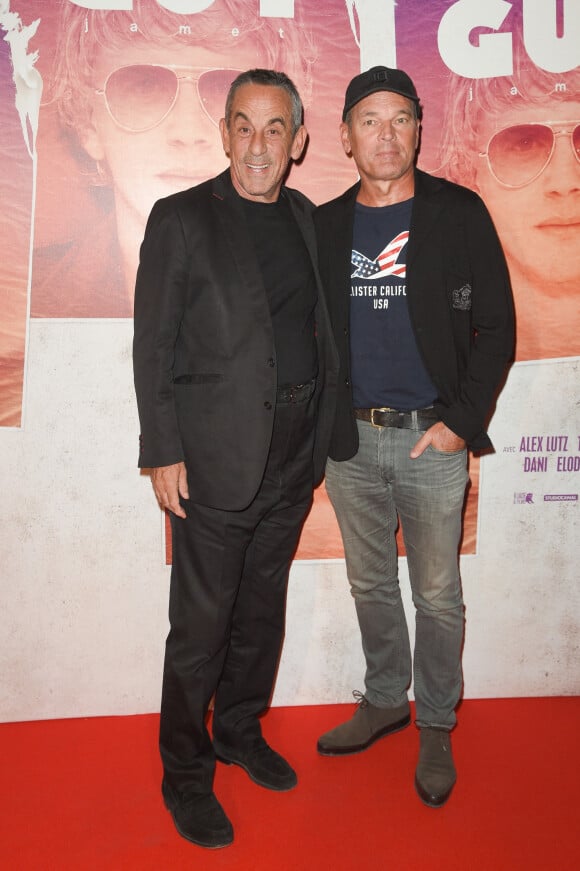Exploring The Shifting Tone In Armando Iannucci's Films And Shows

Table of Contents
<p>Armando Iannucci is renowned for his darkly comedic and satirical works, but a closer examination reveals a fascinating evolution in his comedic style across his filmography. From the biting satire of The Thick of It to the more nuanced humor of Veep, and the bleak absurdity of Death of Stalin, Iannucci's work demonstrates a remarkable range and adaptation of comedic styles. This article will explore the key shifts in tone present across his various projects, analyzing how he employs satire, dark humor, and pathos to achieve different comedic effects. We'll delve into the evolution of Armando Iannucci's comedic style, tracing its development through his most significant works.</p>
<h2>The Aggressive Satire of Early Iannucci: The Thick of It and In the Loop</h2>
<h3>The Power of Vehement Language and Character Dynamics</h3>
<ul> <li>Aggressive, often expletive-ridden dialogue, a hallmark of Iannucci's early work, drives the comedic tension.</li> <li>The chaotic nature of political maneuvering is brilliantly portrayed through rapid-fire exchanges and overlapping conversations.</li> <li>Fast-paced verbal sparring creates a sense of breathless urgency, mirroring the frantic atmosphere of political life.</li> <li>Character studies of flawed, power-hungry individuals reveal the human cost of political ambition and the absurdity of the system itself.</li> </ul>
<p>The fast-paced, verbally aggressive style of The Thick of It and In the Loop is integral to their satirical power. The sheer volume of insults, coupled with the characters' desperate attempts to control the narrative, exposes the hollowness of political spin. Malcolm Tucker, the central figure in The Thick of It, serves as a perfect embodiment of this aggressive, manipulative style. His expletive-laden tirades are not just funny; they're a scathing commentary on the language and tactics employed in the political arena. The comedic impact is amplified by the characters’ inherent flaws – their vanity, their ruthlessness, and their ultimately self-destructive tendencies.</p>
<h3>Satirizing the Political Process</h3>
<ul> <li>The shows' satirical targets include political spin, bureaucratic incompetence, and self-serving politicians.</li> <li>Iannucci's satirical approach is incredibly effective, exposing the absurdity of political systems with precision.</li> <li>The shows have had a lasting impact, influencing how political discourse and the machinations of power are perceived.</li> </ul>
<p>Iannucci masterfully uses caricature and exaggeration to expose the absurdity of political systems. The incompetence and self-serving nature of the characters are not subtle; they are presented in a heightened, almost farcical manner. This approach, while comedic, has serious implications, highlighting the real-world consequences of political spin and manipulation. The shows' lasting legacy lies in their ability to make viewers question the very nature of political power and the individuals who wield it. The impact extends beyond simple entertainment; it's a critical commentary on the political process itself.</p>
<h2>The Refined Absurdity of Veep</h2>
<h3>A Shift Towards Character-Driven Comedy</h3>
<ul> <li>A noticeable shift occurs towards more nuanced character development, exploring the complexities of the individuals involved.</li> <li>The comedic potential stems from the characters' personal flaws and ambitions, creating relatable yet flawed personalities.</li> <li>Witty dialogue and situational irony are used to highlight the absurdities of political life from a more intimate perspective.</li> <li>Veep masterfully blends dark humor with pathos, creating moments of both laughter and empathy for its characters.</li> </ul>
<p>While retaining the satirical edge of his earlier work, Veep showcases a more refined approach to comedy. The focus shifts towards character-driven humor, allowing for a deeper exploration of the personalities within the political machine. The satire is less overtly aggressive, more subtly embedded within the characters' interactions and the unfolding storylines. This shift reflects a maturation in Iannucci's comedic style, demonstrating his ability to adapt his approach to different settings and characters.</p>
<h3>Maintaining Satire Through Subtlety</h3>
<ul> <li>Veep continues to offer satirical commentary on the political process, but with a more understated approach.</li> <li>Subtle jabs at political conventions and personalities are woven into the narrative, adding layers of meaning for the attentive viewer.</li> <li>The show's observational style of satire contrasts with the in-your-face style of The Thick of It, showcasing Iannucci's evolving skill.</li> </ul>
<p>The satire in Veep is less about outright condemnation and more about insightful observation. Iannucci subtly satirizes the political system through the characters’ petty rivalries, their desperate attempts to climb the ladder, and the inherent absurdity of their daily struggles. The humor is often derived from the juxtaposition of high-stakes political maneuvering with the mundane realities of office politics, creating a darkly comedic portrayal of power dynamics. This subtle approach allows the satire to resonate more deeply, provoking thought rather than simply eliciting laughter.</p>
<h2>The Bleak Absurdity of Death of Stalin</h2>
<h3>Exploring the Boundaries of Dark Comedy</h3>
<ul> <li>A significant shift occurs towards a darker, more historically-based satire, pushing the boundaries of comedic sensibilities.</li> <li>The film's portrayal of brutal historical events utilizes dark comedy and slapstick to create a jarring yet effective comedic impact.</li> <li>The use of black comedy in Death of Stalin serves to highlight the absurdity of the situation, contrasting with the seriousness of the subject matter.</li> <li>The film's darkly humorous approach achieves a surprising level of emotional impact, provoking reflection as well as laughter.</li> </ul>
<p>With Death of Stalin, Iannucci delves into the darkest depths of his comedic style. The film’s historical setting provides a unique canvas for his satire, allowing him to explore the absurdities of totalitarian regimes through the lens of black comedy. The juxtaposition of slapstick humor with the brutal realities of Stalin's era creates a powerful and unsettling effect. The ethical considerations of using dark humor to depict such a sensitive topic are undeniable, yet Iannucci’s approach manages to be both entertaining and thought-provoking.</p>
<h3>The Power of Ironic Contrast</h3>
<ul> <li>The film uses contrasting elements – absurdity and brutality – to create a unique comedic effect, highlighting the incongruity of the situation.</li> <li>The juxtaposition of dark humor and serious historical events amplifies the film’s message, adding layers of complexity to the narrative.</li> <li>Death of Stalin masterfully balances entertainment and provocation, leaving a lasting impression on the viewer long after the credits roll.</li> </ul>
<p>Iannucci's use of ironic contrast is a key element in Death of Stalin's success. The film constantly plays with the juxtaposition of the horrific events unfolding with the darkly comedic portrayal of the individuals involved. This approach allows the audience to both laugh and cringe, forcing them to confront the uncomfortable truths about history while simultaneously engaging with the comedic elements. This unique blend makes the film a powerful and memorable piece of satire.</p>
<h2>Conclusion</h2>
<p>This exploration of Armando Iannucci's comedic evolution reveals a versatile filmmaker who adapts his satirical style to suit the context and characters of his narratives. From the aggressive satire of The Thick of It to the nuanced absurdity of Veep, and the bleak humor of Death of Stalin, Iannucci constantly pushes the boundaries of comedic expression. Understanding the shifts in his comedic tone allows for a richer appreciation of his body of work, highlighting the versatility and enduring power of his distinctive approach to satire. To further delve into the nuances of Armando Iannucci's comedic style, explore his other projects and compare his directorial choices across his filmography. Continue exploring the fascinating evolution of Armando Iannucci's comedic style!</p>

Featured Posts
-
 Tadej Pogacars Dominant Performance At The Tour Of Flanders 2024
May 26, 2025
Tadej Pogacars Dominant Performance At The Tour Of Flanders 2024
May 26, 2025 -
 Analyzing The F1 Drivers Press Conference Key Moments And Statements
May 26, 2025
Analyzing The F1 Drivers Press Conference Key Moments And Statements
May 26, 2025 -
 Thierry Ardisson Et Laurent Baffie Fin D Une Amitie Connerie Et Machisme Au C Ur Du Probleme
May 26, 2025
Thierry Ardisson Et Laurent Baffie Fin D Une Amitie Connerie Et Machisme Au C Ur Du Probleme
May 26, 2025 -
 Eldorados Downfall A Bbc Broadcasting Legends Role In The Soap Operas Failure
May 26, 2025
Eldorados Downfall A Bbc Broadcasting Legends Role In The Soap Operas Failure
May 26, 2025 -
 Idf Soldiers Missing In Gaza Remembering Their Sacrifice And Bravery
May 26, 2025
Idf Soldiers Missing In Gaza Remembering Their Sacrifice And Bravery
May 26, 2025
